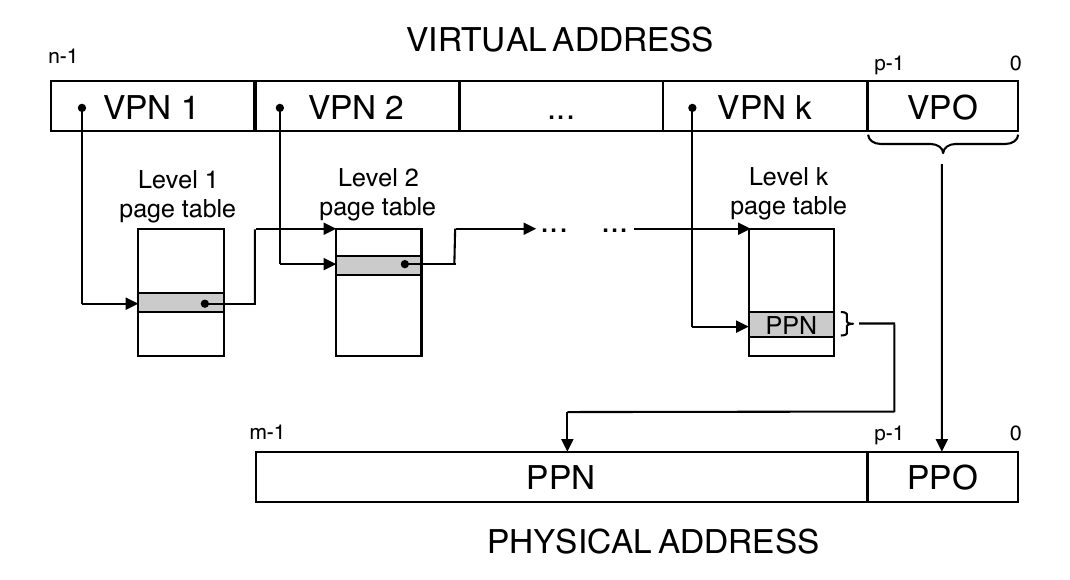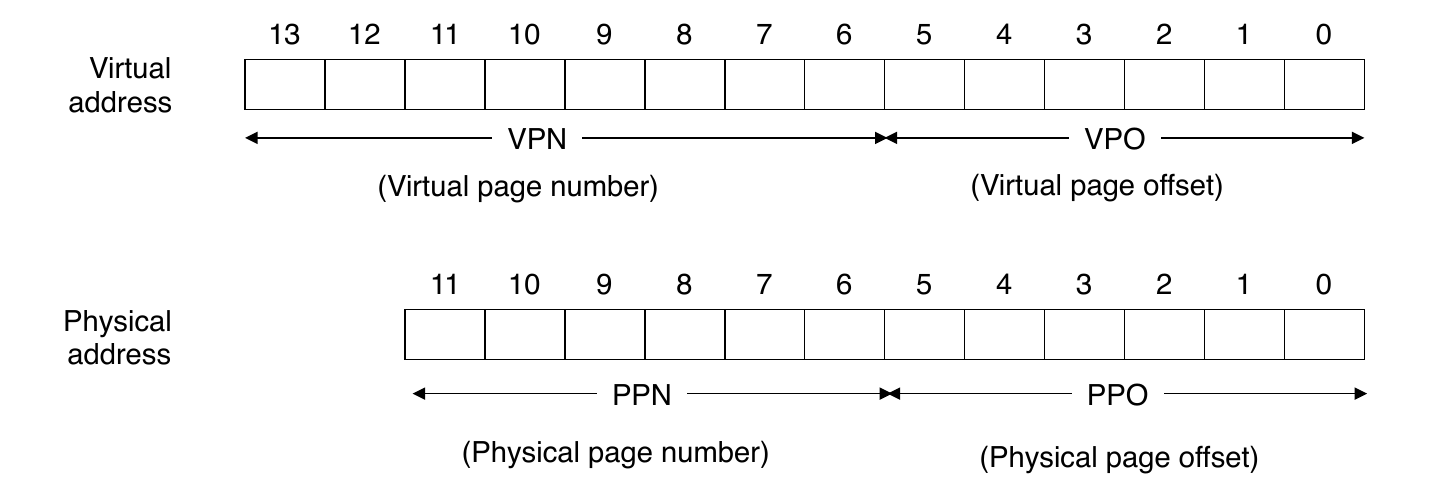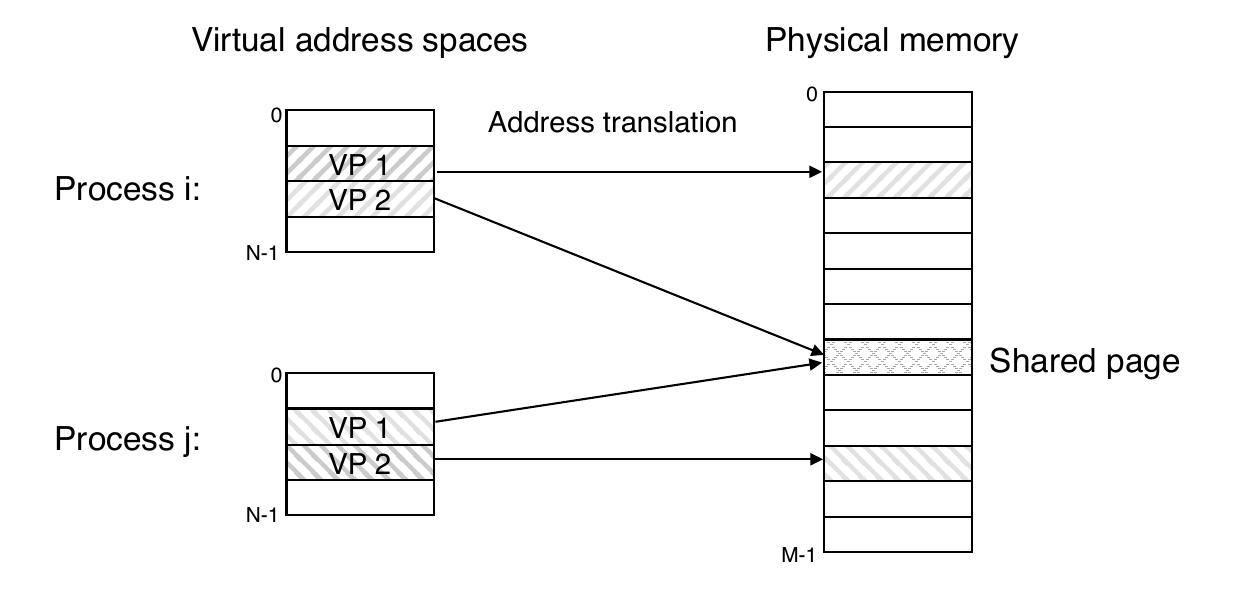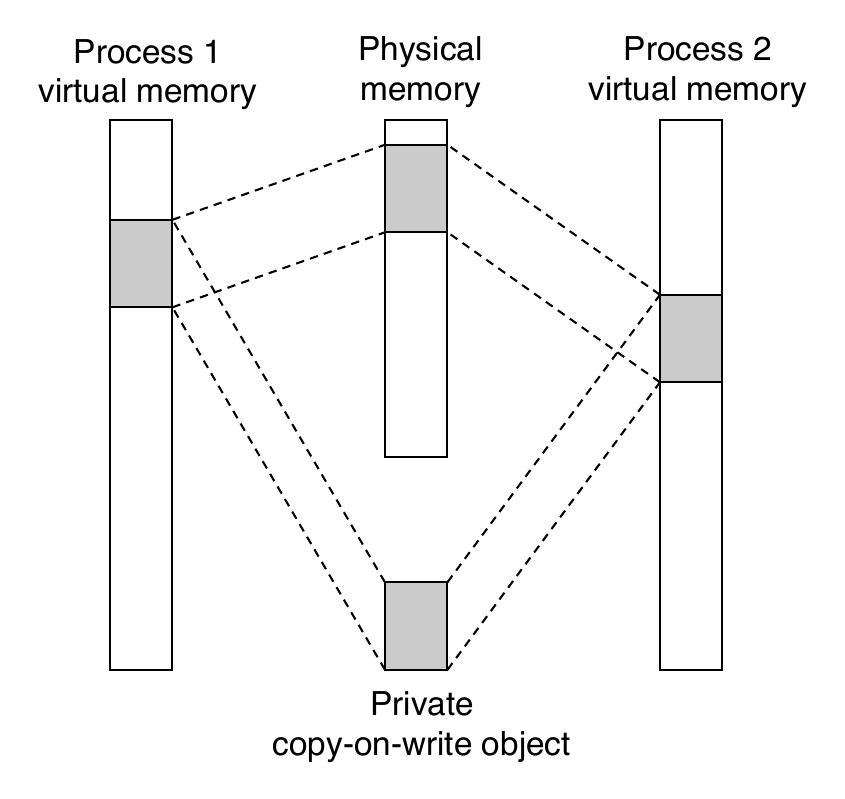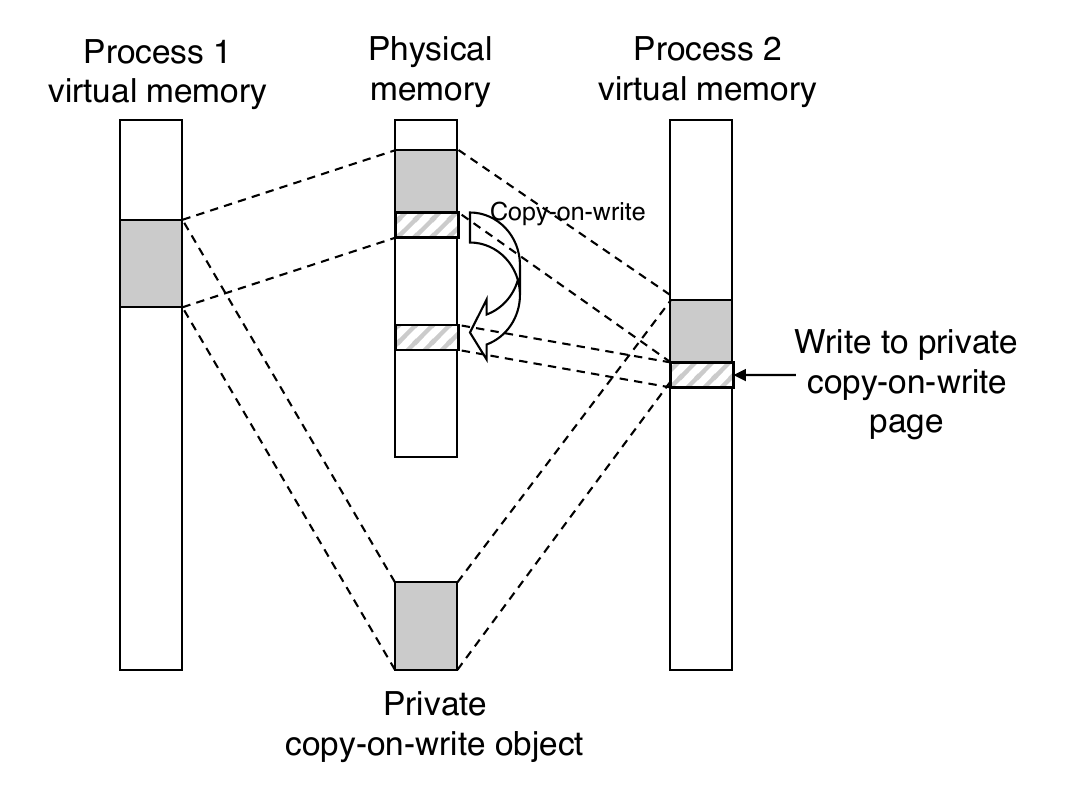Virtual Memory Systems
CSC 235 - Computer Organization
Review: Virtual Memory and Physical Memory
![]()
- A page table contains page table entries (PTEs) that map virtual pages to physical pages
Translating with a k-level Page Table
![]()
Translation Lookaside Buffer (TLB)
![]()
- A TLB hit eliminates the \(k\) memory accesses required to do a page table lookup
Recall: Set Associative Cache
![Cache Organization]() Cache Organization
Cache Organization
Review of Symbols
- Basic Parameters
- \(N = 2^{n}\): number of addresses in virtual address space
- \(M = 2^{m}\): number of addresses in physical address space
- \(P = 2^{p}\): page size (bytes)
- Components of the virtual address (VA)
- TLBI: translation lookaside buffer index
- TLBT: translation lookaside buffer tag
- VPO: virtual page offset
- VPN: virtual page number
- Components of the physical address (PA)
- PPO: physical page offset (same as VPO)
- PPN: physical page number
Simple Memory System Example
- Addressing
- 14-bit virtual addresses
- 12-bit physical addresses
- Page size = 64 bytes
![]()
Simple Memory System TLB
- 16 entries
- 4-way associative
![]()
Simple Memory System Page Table
- Only showing the first 16 entries (out of 256)
![]()
Simple Memory System Cache
- 16 lines, 4-byte cache line size
- Physically addressed
- Direct mapped
![]()
Address Translation Example
- Virtual Address:
0x3d4 = 00001111 010100
- VPN:
0x0F, TLBI: 0x03, TLBT: 0x03, PPN: 0x0D
- Hit, no fault
![]()
Address Translation Example
- Physical Address:
- PPN:
001101, PPO: 010100
- CO:
0, CI: 0x5, CT: 0x0D, Hit: yes, Byte: 0x36
![]()
Intel Core i7 Memory System
![]()
End-to-end Core i7 Address Translation
![]()
Core i7 Level 1-3 Page Table Entries
![]()
- Each entry references a 4K child page table:
- P: child page table present in physical memory
- R/W: read-only or read-write access permission for all reachable pages
- U/S: user or supervisor (kernel) mode access permission for all reachable pages.
- WT: Write-through or write-back cache policy for child page table
- A: reference bit (set by MMU on reads and writes, cleared by software)
- PS: Page size either 4KB or 4MB (defined for level 1 PTEs only)
- Page table physical base address: 40 most significant bits or physical page table address (forces page tables to be 4KB aligned)
- XD: disable or enable instruction fetches from all pages reachable from this PTE
Core i7 Page Table Translation
![]()
Trick for Speeding Up L1 Access
- Observation
- Bits that determine the CI are identical in virtual and physical address
- Can index into cache while address translation is taking place
- Generally there is a hit in the TLB, so PPN bits (CT bits) are available quickly
- “Virtually indexed, physically tagged”
- Cache carefully sized to make this possible
Virtual Address Space of a Linux Process
![]()
Linux Organizes VM as Collection of “Areas”
![]()
pgd: page global directory address; points to L1 page tablevm_prot: read/write permissions for this areavm_flags: pages shared with other processes or private to this process
Linux Page Fault Handling
- Read from a non-existing page: segmentation fault
- Read from data area: normal page fault
- Write to text area: violating permission by writing to a read-only page; Linux reports a segmentation fault
Memory Mapping
- VM areas initialized by associating them with disk objects
- Area can be backed by (that is, get its initial values from):
- Regular file on disk (for example, an executable object file)
- Initial page bytes come from a section of a file
- Anonymous file (that is, nothing)
- First fault will allocate a physical page full of zeros
- Once the page is written to (dirtied), it is like any other page
- Dirty pages are copied back and forth between memory and a special swap file
Review: Memory Management and Protection
- Code and data can be isolated or shared among processes
![]()
Sharing Revisited: Shared Objects
- Process 1 maps the shared object (on disk)
- Process 2 maps the same shared object
- Note that the virtual addresses can be different, but the difference must be a multiple of the page size
- Two processes mapping a private copy-on-write (COW) object
- Area flagged as private copy-on-write
- PTEs in private areas are flagged as read-only
![]()
Sharing Revisited: Private Copy-on-Write (COW) Objects
- Instruction writing to private page triggers protection fault
- Handler creates new R/W page
- Instruction restarts upon handler return
- Copying deferred as long as possible
![]()
Finding Shareable Pages
- Kernel Same-Page Merging
- OS scans through all of physical memory looking for duplicate pages
- When found, merge into a single copy marked as copy-on-write
- Implemented in Linux kernel in 2009
- Limited to pages marked as likely candidates
- Especially useful when processor running many virtual machines
Summary
- VM requires hardware support
- Exception handling mechanism
- TLB
- Various control registers
- VM requires OS support
- Managing page tables
- Implementing page replacement policies
- Managing file system
- VM enables many capabilities
- Loading programs from memory
- Providing memory protection

